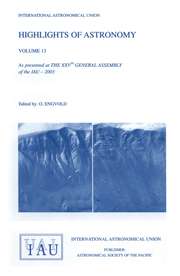Article contents
Report of the IAU WGAS Sub-group on Standard Procedures
Published online by Cambridge University Press: 30 March 2016
Extract
The given mission of the subgroup on Standard Procedures (SGSP) of IAUWGon Astronomical Standards (IAU/WGAS) is to prepare report “on standard procedures needed in fundamental astronomy, which a) should have a maximum degree of compatibility with the IERS Standards, b) should include the implementations of procedures in the form of tested software and/or test cases, c) should be available not only in written form, but also in machine-readable form” as described in the third item of Recommendation VIII of the IAU Resolution A4 (1991). After some general discussions, in 1992 we issued a questionnaire on the image and mechanism on the supposed set of standard procedures (IAU/WGAS Circulrar 51.2.1) and sent it to over 200 scientists in the world. Within a few months, 16 answers were sent back. The detailed answers and the questionnaire was distributed (IAU/WGAS Circular 54.2.1). As a simulation of supposed mechanism, in 1993 we did a test campaign to collect computational procedure(s) to compute the present IAUprecession formula (Lieske et al., 1979) in FORTRAN (IAU/WGAS Circular 59.2.1). Within a few months, 5 submissions from 5 countires (Japan, China, USA, Russia, and UK) reached. The analysis of submitted routines was circulated (IAU/WGAS Circular 65.2.1). Based on these responses, we concluded that the establishment of a mechanism to provide such procedures to the community of astronomy is quite useful. To realize this, we will recommend some action items to the IAU as is described in the next Section. Its main purpose is to establish a mechanism by the combination of a comiittee of board and a center, which are to operate within a year after the recommendations are adopted by the IAU. Section 3 will describe some guidelines for the committee and center to perform the tasks to create and maintain standard procedures. Of course, these are to be consulted if necessary and are not to restrict or regulate the activity of the committee and the center.
Information
- Type
- II. Joint Discussions
- Information
- Copyright
- Copyright © Kluwer 1995
- 5
- Cited by

